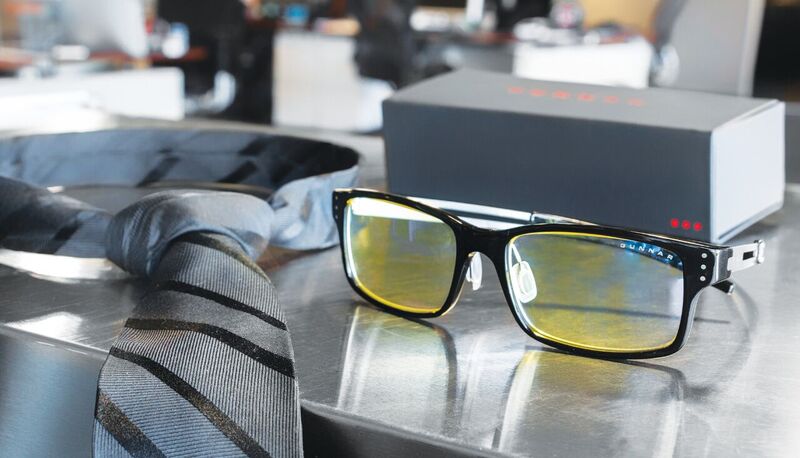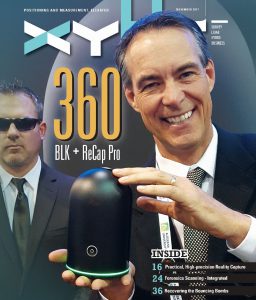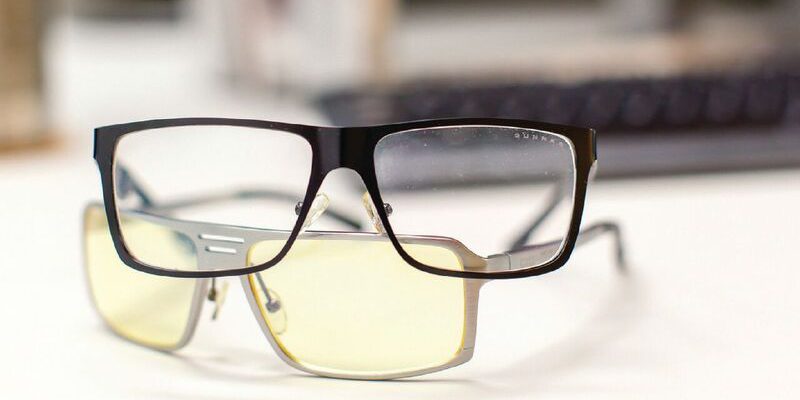I use special glasses to reduce eye strain in my screen-centric workplace.
The geospatial industry has evolved greatly over the last decade, and with the current evolution of our systems this trend shows no sign of slowing down. We are seeing more and more of what has traditionally been considered fieldwork being brought into the office and performed digitally, thanks to the various forms of lidar and photogrammetry.
With the dominance of these alternative forms of capturing data, the amount of office time has grown exponentially, as now someone has to sit down and manually (for now) extract the information that our clients desire. One portion of our jobs that has not changed much is the fact that we still have to look a computer screen and interact with all of that data. This is something that will not be going away anytime soon.
When I first made the transition from the field into the office as a land surveying project manager using CAD, one thing became apparent right away: just how much my eyes were strained from starring at a screen all day. Going from being outdoors and only glancing at my data collector screen for short moments throughout the day to sitting in front of a computer all day was jarring, to say the least. My eyes physically hurt, and, by lunchtime, the headaches would begin to roll in.
I was uncomfortable enough to reconsider going back into the field just to get away from the computer screens. This was about eight or nine years ago. A friend who worked in the gaming industry told me about Gunnar Optiks; he had a similar issue early in his career, and they helped him out quite a bit. After a bit of research and reading through the reviews, I decided to pick up a pair.

Clear lenses are designed for computer users who need to view an equally balanced color spectrum; amber lenses diminish the harshest part of the color spectrum for greatest protection.
Gunnar Optiks is based here in San Diego, and they’ve spent time refining and researching the causes of eyestrain along with how it can be remedied. They have lengthy amounts of data that you can wade through at your delight, as much of it is on their website.
In my personal observation, their eyeglasses do help to reduce eyestrain (and I can rightfully say that as I am in no way affiliated with Gunnar Optiks). I have both the Amber and the Crystalline versions as I use each for different aspects of my day-to-day work.
The Amber lenses are helpful to me when working with point clouds and other types of lidar data, as I am often intently focused on my screen. Especially when extraction is involved, I can spend hours continually working through any particular model, and my eyes used to be usually the first thing to give out. The blue light spectrum that our modern devices emit is almost unanimously agreed upon as being bad for our eyes. The glasses provide quite a bit of relief, some noticeable immediately.

Nicolau sporting his protective lenses.
For a person with 20/20 vision as I have, they do take an hour or so to get used to wearing as they have a minor magnification to them, and you get a yellowish tint to everything, but you notice that less and less quite quickly.
There is no tint with the Crystalline (clear lens) style, and it looks less techie, so you’re not asked for nearly as much computer support as you do when you’re wearing the Amber lenses. However, there’s a trade-off in the amount of blue light that gets filtered out. The clear lenses do offer benefits, though.
Overall, I don’t have any complaints about Gunnar Optiks; their quality is good and the Ziess lenses are impeccable (as we are accustomed to with Ziess products), especially given the low price point.
In our workplace environments, we are asking our eyes to do things they were not designed for. We need to protect our eyesight, the most valuable tool we employ every day.
If you like this author’s personal review style, check out his recent HP review.
To read more from this print issue, click on the cover below.


